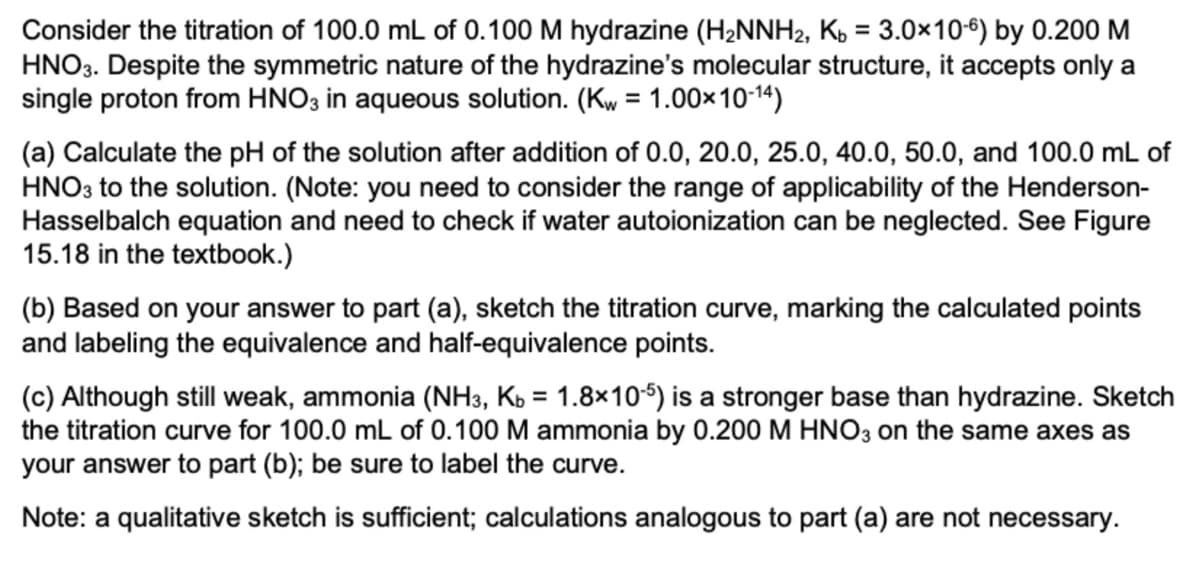Consider the titration of 100.0 mL of 0.100 M hydrazine (H2NNH2, K, = 3.0×10-*) by 0.200 M HNO3. Despite the symmetric nature of the hydrazine's molecular structure, it accepts only a single proton from HNO3 in aqueous solution. (Kw = 1.00×10-14) (a) Calculate the pH of the solution after addition of 0.0, 20.0, 25.0, 40.0, 50.0, and 100.0 mL of HNO3 to the solution. (Note: you need to consider the range of applicability of the Henderson- Hasselbalch equation and need to check if water autoionization can be neglected. See Figure 15.18 in the textbook.) (b) Based on your answer to part (a), sketch the titration curve, marking the calculated points and labeling the equivalence and half-equivalence points. (c) Although still weak, ammonia (NH3, Kô = 1.8×10-5) is a stronger base than hydrazine. Sketch the titration curve for 100.0 mL of 0.100 M ammonia by 0.200 M HNO3 on the same axes as your answer to part (b); be sure to label the curve.

Acids and bases are classified as weak or strong depending on the their ability to dissociate and the amount of dissociation. When an acid or a base undergoes a complete dissociation, then they are considered as strong acid or strong base, respectively. While those that undergo partial dissociation are weak acid or weak bases.
In both acids and bases, there exists an equilibrium between the dissociated species and undissociated species. In the case of acids, an equilibrium exists between conjugate base and hydronium ion and undissociated acid that is governed by equilibrium constant known as acid dissociation constant . Similarly, in the case of weak base, an equilibrium exists between conjugate acid, hydroxide ion and undissociated base that is governed by base dissociation constant .
Trending now
This is a popular solution!
Step by step
Solved in 5 steps




